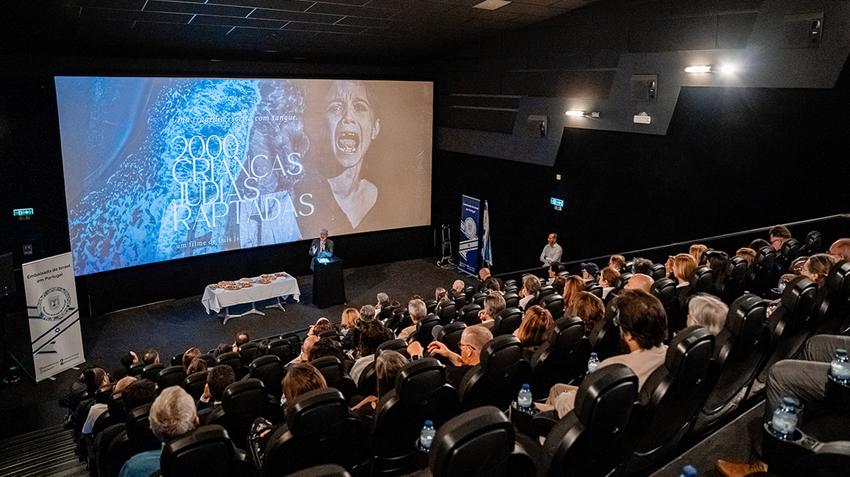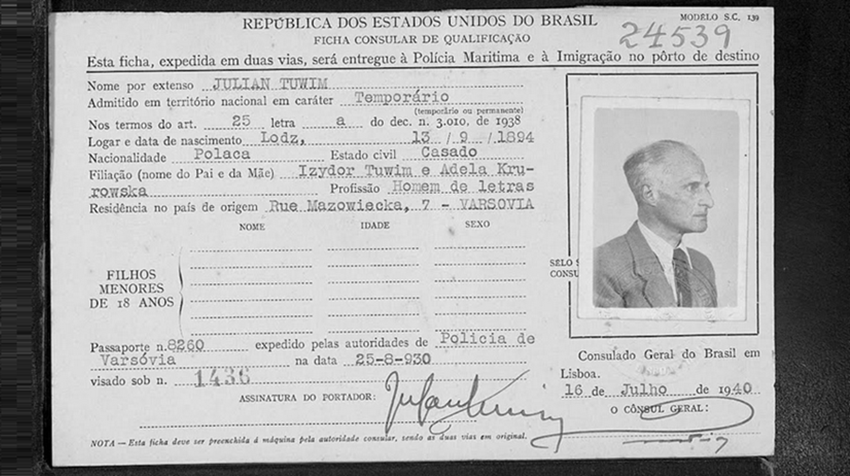The Jewish Community of Porto, Portugal has just made a feature film about its history available for free on YouTube. Produced in 2018, the 90-minute feature film had never been freely accessible to the public. The Community has decided to do this now, because it is already recognized as one of the strongest Jewish organizations in Europe, with synagogues, museums, films about Jewish history and much more.
Although essentially centred on the Jews of Oporto during the 20th century, the film begins with a journey through time to show that the Jews were present in the city for at least one millennia, preceding any memories or existing monuments in this city.
Following the foundation of Portugal, the Jewish community of Oporto became very scholarly, and was strong in economic terms. The city resembled a small Judea. Rabbi Isaac Aboab, the last Gaon of Castile and the greatest authority in the Jewish world at that time, chose the city to live after the expulsion of the Jews from Spain in 1492.
However, King D. Manuel forbade Judaism in Portugal in 1496. At least one hundred thousand Jews fall victim to this edict. They were forced to confront a long journey to distant countries. Others found it difficult to leave Portugal and were compelled to forget the Law of Moses. Officially, the Jewish community disappeared and it would only re-emerged 300 years later.
At the end of the Inquisition in the nineteenth century, the Jews slowly began to return to Portugal. Initially, the Jewish Community of Oporto was Sephardic, from North Africa, but at the end of the 19th century, all the families were Ashkenazi, which multiplied before, during and after the First World War.
A small community of Ashkenazi Jews connected by marriages among themselves settles in Oporto, and these are joined by a Portuguese military officer converted to Judaism, Captain Barros Basto who since 1927 begins to travel, sometimes on horseback, seeking to bring back to official Judaism those who practice "Marranism". "It is one of the most romantic stories of the 20th century", said the historian Cecil Roth.
The faith of the Marranos – men, women and children forsaken by the world four centuries earlier – made Basto declare that he will pursue the “Rescue Work” till the end of his days. To carry out this human rescue programme, the Jewish Community of Oporto built the largest Synagogue of the Iberian Peninsula, with the financial support of international Jewish organisations. However, the “Rescue Work” failed, for contrary to everyone’s expectations, the Marranos were not willing to add anything to what they already did or to correct their practices which had been influenced by Christianity.
In 1937, victimized by anonymous letters, Barros Basto was expelled from the army for having taken part in circumcisions. A case that became known as the “Portuguese Dreyfus" case.
When the great Kadoorie Mekor Haim Synagogue was inaugurated in the following year, the “Rescue Work” was practically dead. It was the start of a progressive process of assimilation which led to the extinction of the Marrano communities in the villages owing to mixed marriages, emigration, liberalisation of customs and the weakening of religious ties.
The period of Nazism and the Holocaust brought hundreds of refugees to Oporto, their life in ruins. The Jewish community in this city became practically a community of refugees. Old and young, sad, distraught, with no worldly goods, they cried for their families whose fate they did not know. Many slept and wept here and there in the Synagogue. With the exception of a few, who stated their wish to settle in Portugal, most were only waiting for the moment to depart to other countries where they could start their lives again. “Europe – they said – never again!”
Following the departure of the refugees the insignificance of the Jewish Community of Oporto in terms of number was quite obvious, as was the exaggerated dimension of its Synagogue. One of the smallest communities of Europe had one of the largest Synagogues. The absence of the faithful during prayers in the temple meant that the Community’s religious leader at the time, the polish Srul Finkelstein, prays and sings, many times totally alone, in the vastness of the echoing Synagogue.
The Community was only reborn in the 21st century. Currently it is essentially composed by Sephardic Jews of Portuguese origin, who had recently arrived in Portugal. Five centuries after D. Manuel’s edict had led to the mass exile of the Jewish community, a new law promoted the return to the land they had been forced to forsake.
All this is told in the film "Sefarad" now made available to the public by the Oporto Jewish Community.
The Jewish community of Porto has been active in promoting Jewish culture, history, and education over the past decade and has previously produced other films about the history of the Jews in Portugal.
One such film - 1618, which recounts the story of the Inquisition in Oporto - won the largest number of international awards for a Portuguese film. Another film - "1506, The Lisbon Genocide" - will have its world premiere on April 19 and will be shown for free on multiple online platforms and in different languages including English, Hebrew, French, Spanish and Portuguese.
Among the important projects led by the community over the past decade are a painting gallery showcasing the city's long Jewish history, the Jewish Museum in Porto and the Holocaust Museum, which in the past two years have hosted more than 100,000 schoolchildren, constituting 10% of all schoolchildren in Portugal.


































